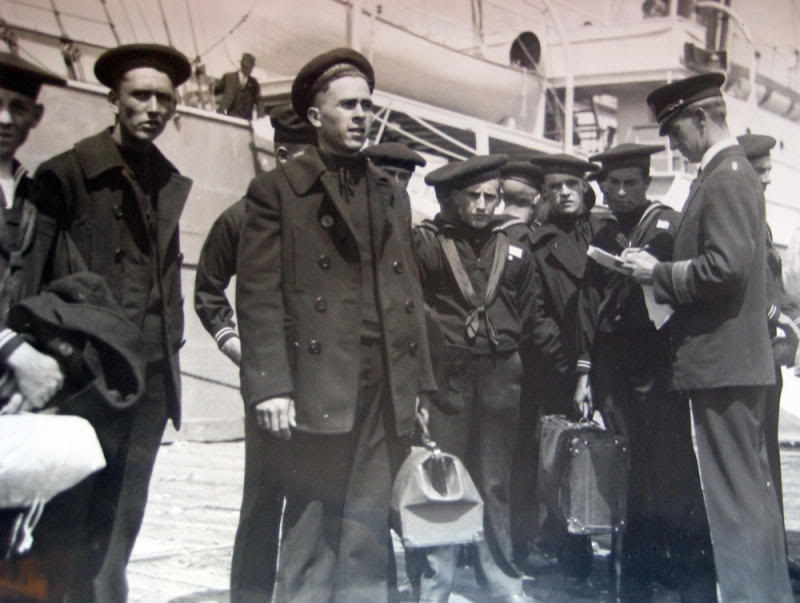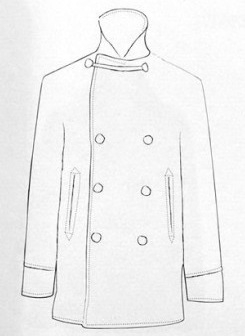It originally hails from a military background, the same setting that has provided the inspiration for a myriad of modern day items of clothing now considered to be classics. It is closely related to the blazer - a subject we will cover soon enough - and is a sophisticated mainstay of the male closet, a complex one, often misunderstood and misinterpreted nowadays. The Peacoat most likely saw the light of day in Holland in 1723, before spreading throughout Europe and the United States. The origin of the name, however, provokes dispute: some say it derives from the Dutch word pijjekker or pijjakker, meaning “jacket made of thick fabric”, others believe it comes from the word “pilot” or the military grade “petty officer”, in a word: “P-coat”. One thing is sure - as is often the case in this field - it is in Great Britain that it reached its peak.
The Peacoat is a work jacket, so is not worn by ranked personnel, for whom a more formal version is reserved. Always blue and double-breasted, like those with a horizontal flap pocket, eight gold-coloured buttons and knee-length which is dubbed the Bridge Coat, reserved only for high-ranked officers. Its overall structure is based on the double-breasted jacket with 6x2 buttons, plus another two higher up for decoration, high, generous lapels, vertical welt pockets and a slim fit. Navy blue is the only acceptable colour, and the fabric should be of Melton carded wool. The buttons can be metallic, golden and displaying the relevant Naval emblem.
The version that offers the most room for bespoke interpretation is, without a doubt, the one made by Charles Camplin who, in 1857, became the official supplier of the Royal Navy, thanks to his version of the coat, unbeatable in quality and content. It was lined in contrasting red fabric, and was cited by Henry Lloyd in 1966 when he designed for Sir Francis Chichester the legendary “Consort Jacket” with its so-called cordage (the short length of cord) used both as an extension for blocking the final two buttons, when crew members wore heavy sweaters under their Peacoats preventing them from buttoning them up, and to attach the fog whistle. Camplin’s original Peacoat Island still conserves the unchanged details of yesteryear, with the addition of buttonholes in green-blue grosgrain, like the ribbon of the General Naval Service medal, the one conferred for distinguished service, brushed metal buttons with the emblem in rain resistant fulled woven wool fabric.
Words by Mr Giovanni Onano









